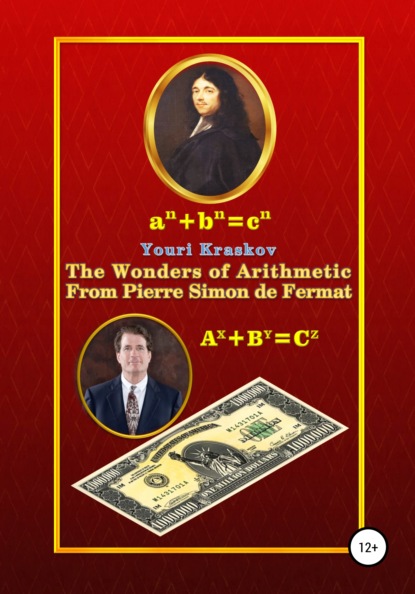По всем вопросам обращайтесь на: info@litportal.ru
(©) 2003-2024.
✖
The Wonders of Arithmetic from Pierre Simon de Fermat
Год написания книги
2021
Настройки чтения
Размер шрифта
Высота строк
Поля
Else earlier, 22 years ago, in October 1636 in a letter to Mersenne Fermat reported on the same problem as about his discovery, but in general form i.e. for any polygonal numbers (for example, triangles, squares, pentagons etc.). Subsequently, he even called this theorem golden one. Consequently, the method of descent was discovered by him at the very beginning of his research on arithmetic. By the time of writing the letter-testament, Fermat already knew from Carcavy that the question of foundation the French Academy of Sciences was practically resolved and he needed only to wait for the building to be completed, so it come true his life's dream to become a professional scientist in the rank of academician. Huygens was commissioned to collect materials for the first academic publications. Fermat proposed for them the method of descent discovered by him and the solution of specific arithmetic tasks on its basis.
However, only few people knew that these tasks were very difficult and Fermat understood that if he would publish their solutions, they would not make any impression at all. He already had such an experience and now he has prepared a real surprise. For those who don't appreciate the value of his solution, he would offer to solve another task. This is the Basic theorem of arithmetic, which is of particular importance for all science since without it the whole theory loses its strength. Fermat found a mistake in the proof of Euclid and came to the conclusion that to prove this theorem without applying the descent method is extremely difficult if at all possible. However, now we can also reveal this secret with the help of our opportunities to look into Fermat’s cache with “heretical writings” and return his lost proof to science in the form of the reconstruction presented below.
3.3.2. The Proof of Fermat
So, to prove the Basic theorem of arithmetic we suppose that there exist equal natural numbers A, B consisting of different prime factors:
A=B (1)
where A=pp
p
…p
; B=хx
x
…x
; n?1; m?1
Due to the equality of the numbers A, B each of them is divided into any of the prime numbers p
or x
. Each of the numbers A, B can consist of any set of prime factors including the same ones, but at the same time there is no one p
equal to x
among them, otherwise they would be in (1) reduced. Now (1) can be represented as:
pQ=xY (2)
where p, x are the minimal primes among p
, x
; Q=A/p; Y=B/x .
Since the factors p and x are different, we agree that p>x; x=p–?
then
pQ=(p – ?
)(Q+?
) (3)
where ?
=p–x; ?
=Y–Q
From (3) it follows that Q?
=(p – ?
)?
or
Q?
=x?
(4)
Equation (4) is a direct consequence of assumption (1). The right side of this equation explicitly contains the prime factor x. However, on the left side of equation (4) the number ?
cannot contain the factor x because ?
= p – x is not divisible by x due to p is a prime. The number Q also does not contain the factor x because by our assumption it consists of factors p
among which there is not a single equal to x. Thus, there is a factor x on the right in equation (4), but not on the left. Nevertheless, there is no reason to argue that this is impossible because we initially assume the existence of equal numbers with different prime factors.
Then it remains only to admit that if there exist natural numbers A = B composed of different prime factors, then it is necessary that in this case there exist another natural number A
=Q?
and B
=x?
; also equal to each other and made up of different prime factors. Given that ?
=(p–x)<p, and ?
=(Y–Q)<Y and also, after comparing equation (4) with equation (2), we can state:
A
= B
, where A





